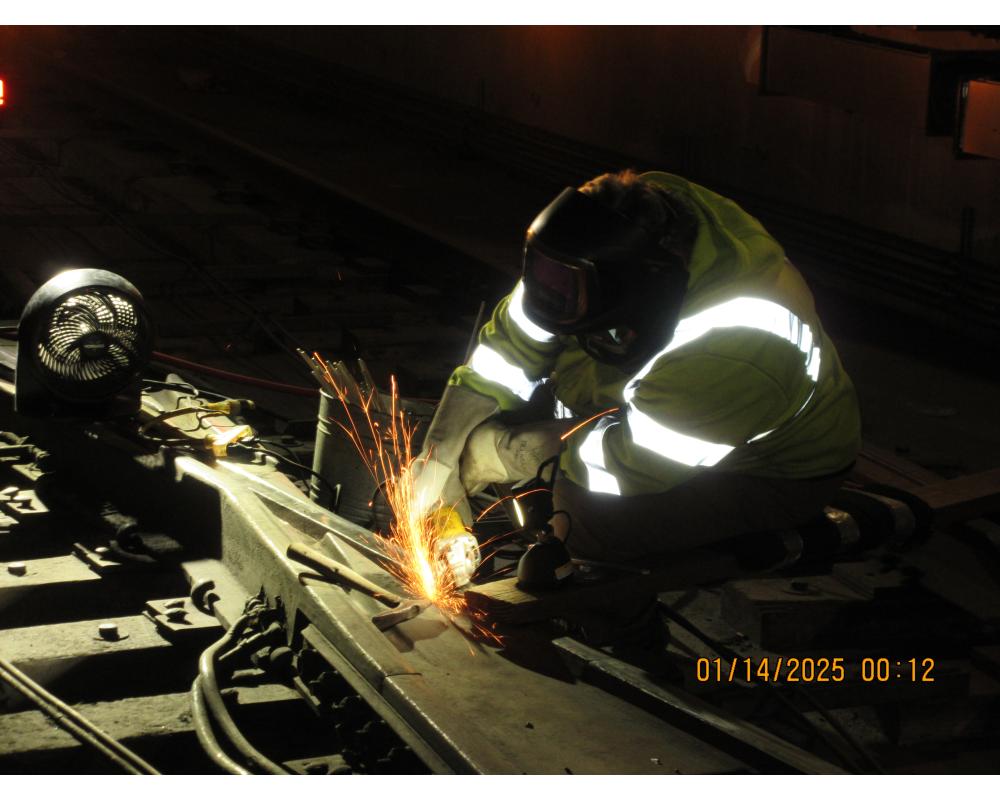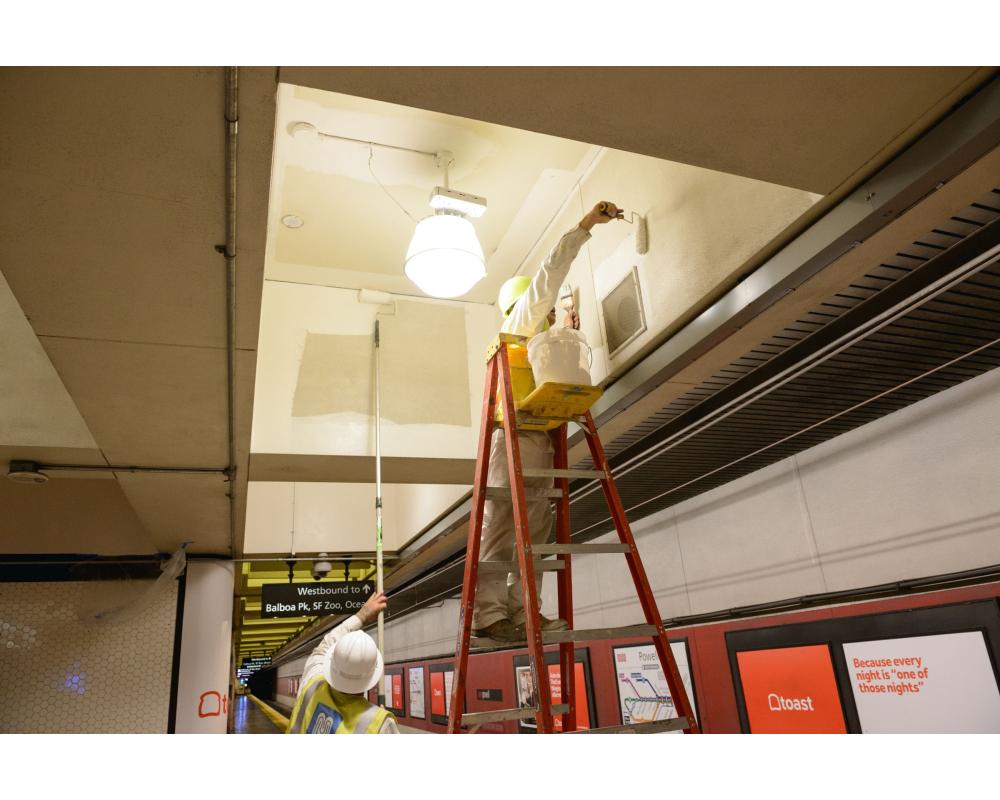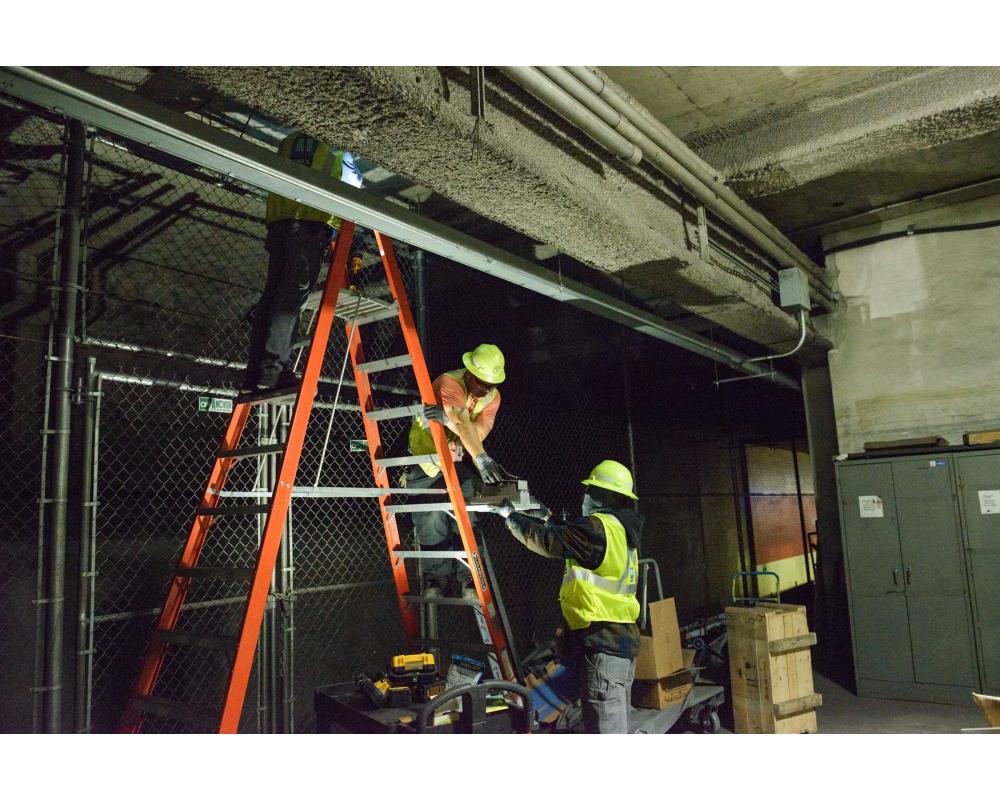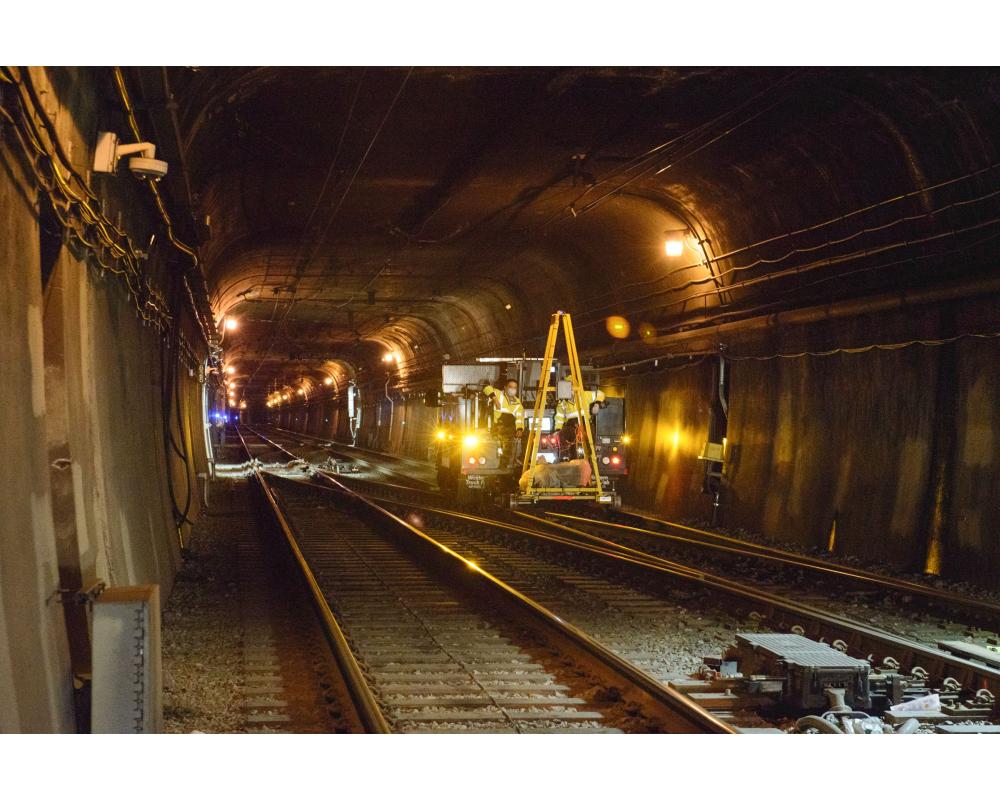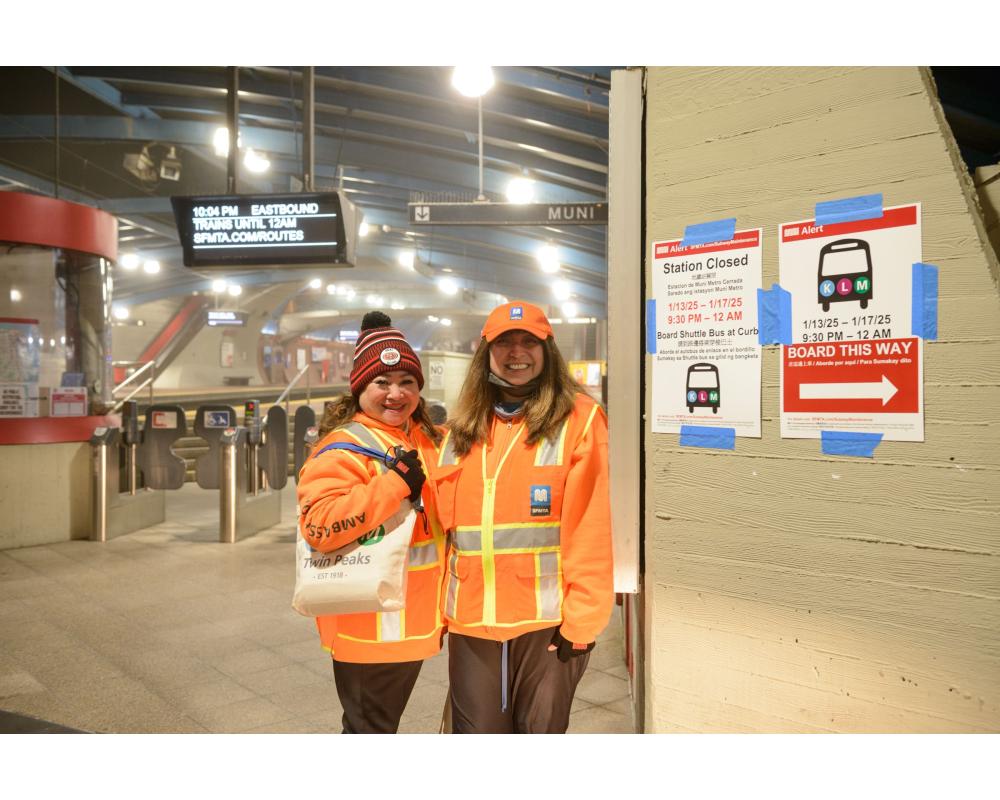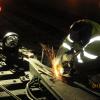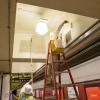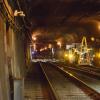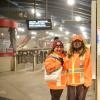
Crews complete overhead line work near Castro Station during Fit-It Week.
Have you ever gotten on a train that broke down, or stopped for several minutes? Or maybe your train just never arrived at all? Well fortunately, those incidents are much less frequent today than they were a few years ago.
At the beginning of the Covid-19 pandemic, we had to temporarily suspend Muni Metro train service. We did this to better match our limited resources and where riders were going.
But there was a silver lining to that shutdown. We were able to use the opportunity to catch up on crucial maintenance projects and accelerate other upgrades needed to make our trains run smoothly.
Since bringing the trains back, we've continued to adopt a more proactive approach with regular maintenance weeks. "Fix-It Week" is part of the invisible work that happens behind the scenes—the Muni elves who work around the clock to keep our train system running efficiently.

Since the prolonged Muni Metro shutdown during the pandemic, and with ongoing maintenance, we’ve seen major improvements to travel time and reliability. See more subway performance data.
During last week’s Fix-It Week, we tackled over 40 projects. The work included:
- Replacing worn rail and overhead wire components
- Clearing debris and sand from trackways to prevent corrosion
- Maintaining drainage systems for improved reliability
- Re-lamping trackside lighting for better visibility
- Testing and cleaning switch systems as part of our critical signaling maintenance
- Updating equipment to enhance system efficiency
Much of this work happens when most San Franciscans are sound asleep. We do the work at night so our riders don't feel the impacts of shutting down transit service.
But sometimes there isn't enough time to get the job done after midnight when the trains have stopped running. It takes time for crews to set up and break down equipment. This only leaves a couple hours to do work during what we call “non-revenue hours.” That might be enough for small fixes, but for bigger projects we need more time. By closing the subway a little earlier for a week at a time, we can get a lot more done.
Fix-It Weeks are held a few times a year to address these larger maintenance projects and upgrades. By fixing things before they break, it helps keep your Muni trips shorter and your trains arriving on time. This work also helps to make our system cleaner, safer and more reliable.
Riders are taking note of this and other transit improvements, like our Muni Forward program. Last year we received our highest rider satisfaction rating since we began surveying people.
Thank you to our incredible team of mechanics, electricians, engineers and cleaners who are working behind the scenes to make your next ride a seamless one. And thanks to our riders for trusting Muni to get you to your next destination!
Check out the photo gallery below to see some of this work in action.
